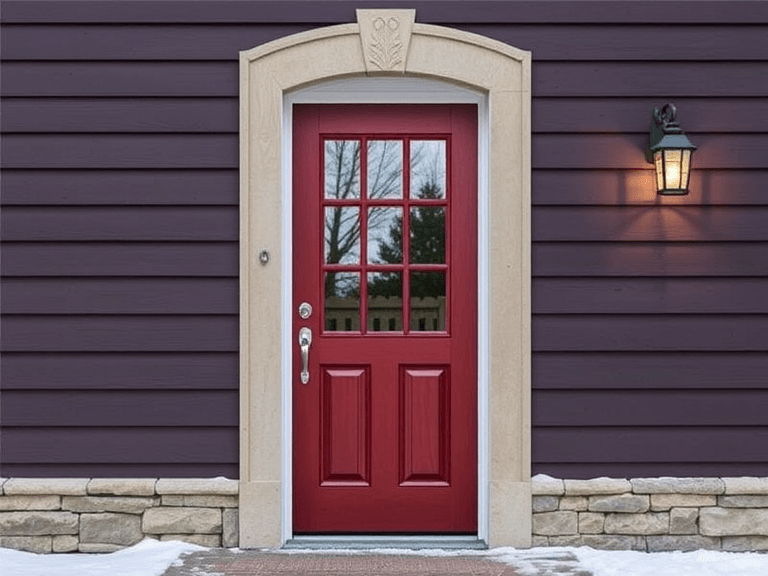When it comes to keeping your home comfortable and energy-efficient, few upgrades are as impactful as proper weatherproofing for your doors and windows. Whether you’re battling harsh winters, hot summers, or unpredictable weather patterns, sealing these entry points can significantly improve your home’s insulation and save you money on energy bills. In this guide, we’ll explore the importance of weatherproofing, the materials you’ll need, and the steps to protect your home effectively.
Why Weatherproofing Matters
Energy Efficiency
Doors and windows are the primary culprits of air leaks in most homes. These gaps allow heated or cooled air to escape, forcing your HVAC system to work harder. Proper weatherproofing can reduce energy consumption by up to 30%, leading to lower utility bills and a reduced carbon footprint.
Comfort
Drafty doors and windows can create cold spots in winter and hot zones in summer. Weatherproofing eliminates these uncomfortable areas, providing a more consistent indoor temperature year-round.
Protection from the Elements
Weatherproofing shields your home from moisture, wind, and extreme temperatures. This not only enhances your comfort but also prevents water damage, mold growth, and structural deterioration caused by the elements.
Noise Reduction
Effective weatherproofing also acts as a sound barrier, keeping outdoor noise from disrupting your indoor peace. This is especially beneficial for homes located in busy or noisy areas.
Tools and Materials You’ll Need
Before you start weatherproofing, gather the following tools and materials:
- Weatherstripping: Available in foam, rubber, or vinyl, this is essential for sealing gaps around doors and windows.
- Caulking Gun and Caulk: Use silicone or latex caulk to seal cracks and gaps around frames.
- Door Sweeps: These attach to the bottom of doors to block drafts.
- Foam Tape: Ideal for sealing small gaps.
- Expanding Foam Sealant: Great for filling larger cracks.
- Window Film Kits: Plastic shrink film provides an extra layer of insulation for windows.
- Utility Knife: For trimming materials to size.
- Screwdriver and Drill: Necessary for installing door sweeps and other hardware.
Step-by-Step Guide to Weatherproofing
1. Inspect Your Doors and Windows
Start by identifying areas where air leaks occur. On a windy day, hold a lit candle or incense stick near the edges of doors and windows. If the flame or smoke wavers, you’ve found a draft. Mark these areas for sealing.
2. Clean the Surfaces
Ensure the areas around doors and windows are clean and dry before applying any weatherproofing materials. Dirt and moisture can prevent adhesives from sticking effectively.
3. Apply Weatherstripping
- For Doors: Choose a weatherstripping material that suits your door type. Adhesive-backed foam or rubber is easy to install and effective for most doors. Cut the weatherstripping to length and press it firmly into place along the doorframe.
- For Windows: Use weatherstripping to seal gaps where the sashes meet the frame. Foam tape works well for this purpose.
4. Seal Gaps with Caulk
Use a caulking gun to apply caulk around the edges of window frames and door jambs. Focus on areas where the frame meets the wall. Smooth the caulk with your finger or a caulk tool for a neat finish. Allow it to dry completely.
5. Install Door Sweeps
Attach a door sweep to the bottom of exterior doors to block drafts. Measure the width of the door, cut the sweep to fit, and screw it into place. Adjustable sweeps can be fine-tuned to ensure a snug fit against the floor.
6. Add Insulating Window Film
For extra protection during winter, apply a window film kit. These kits typically include a plastic sheet and double-sided tape. Secure the film to the window frame and use a hairdryer to shrink it, creating a tight seal.
7. Use Expanding Foam for Large Gaps
For larger cracks or gaps, especially around older window frames, use an expanding foam sealant. Be cautious not to overfill, as the foam expands significantly and can push against the frame if applied excessively.
Maintenance Tips for Long-Lasting Weatherproofing
- Regular Inspections: Check your weatherproofing measures at least twice a year. Look for wear and tear, such as peeling weatherstripping or cracked caulk, and replace them as needed.
- Clean Regularly: Keep tracks and seals clean to ensure they function properly. Dirt and debris can weaken adhesives and create new gaps.
- Upgrade When Necessary: If your doors and windows are outdated, consider replacing them with energy-efficient models. Look for options with double or triple glazing and low-E coatings for maximum insulation.
Benefits Beyond Comfort and Savings
Weatherproofing your doors and windows doesn’t just benefit you—it’s also good for the environment. By reducing energy consumption, you’re contributing to a more sustainable future. Additionally, a well-sealed home increases its resale value, as buyers appreciate energy-efficient upgrades.
Why Choose ZZ the HandyMan for Weatherproofing?
At ZZ the HandyMan, we specialize in providing top-quality home improvement services, including door and window weatherproofing. Our team of experts ensures your home stays protected from the elements, saving you money and enhancing your comfort. Whether you need minor repairs or a complete upgrade, we’ve got you covered. Contact us today for a consultation and let us help you create a cozier, more efficient home.


